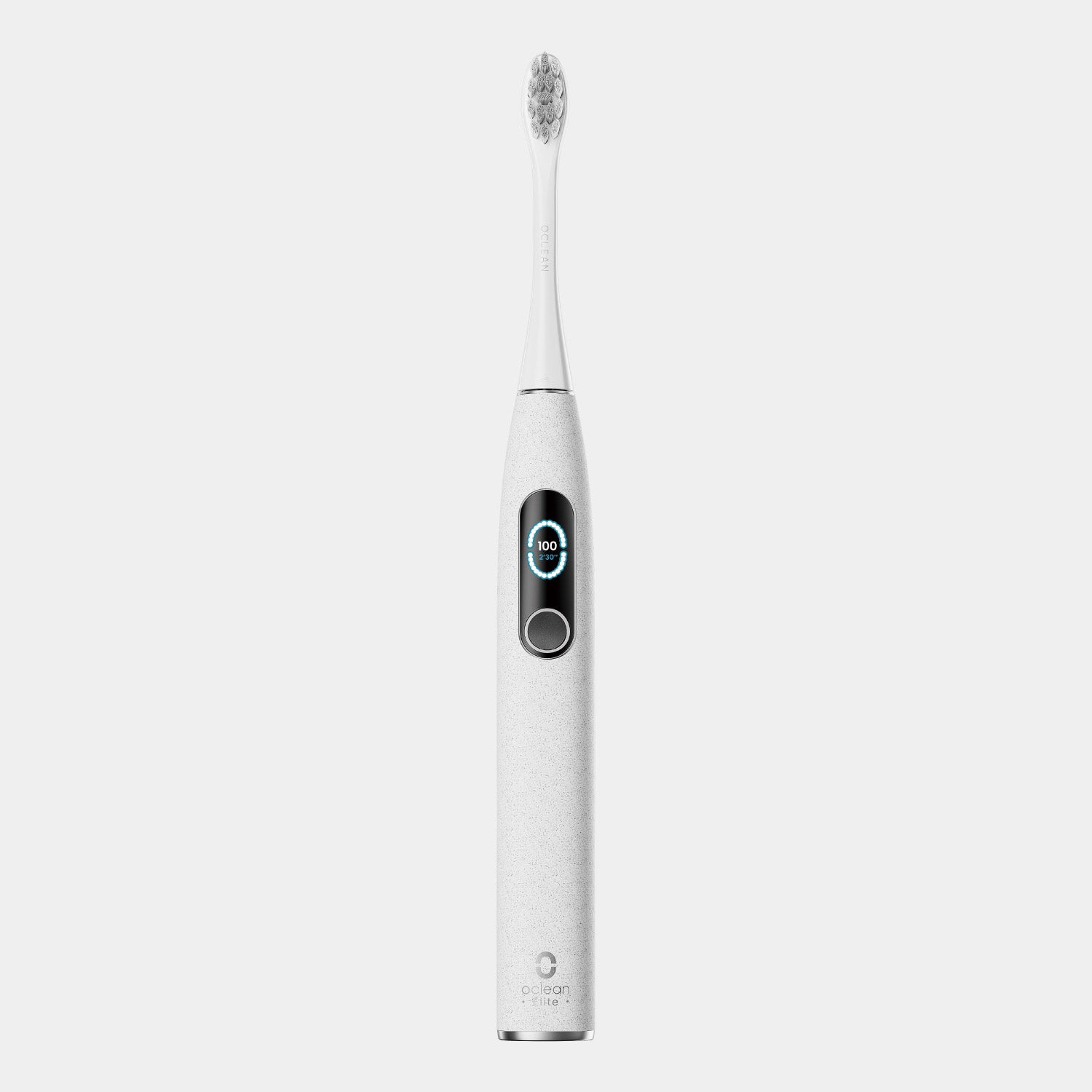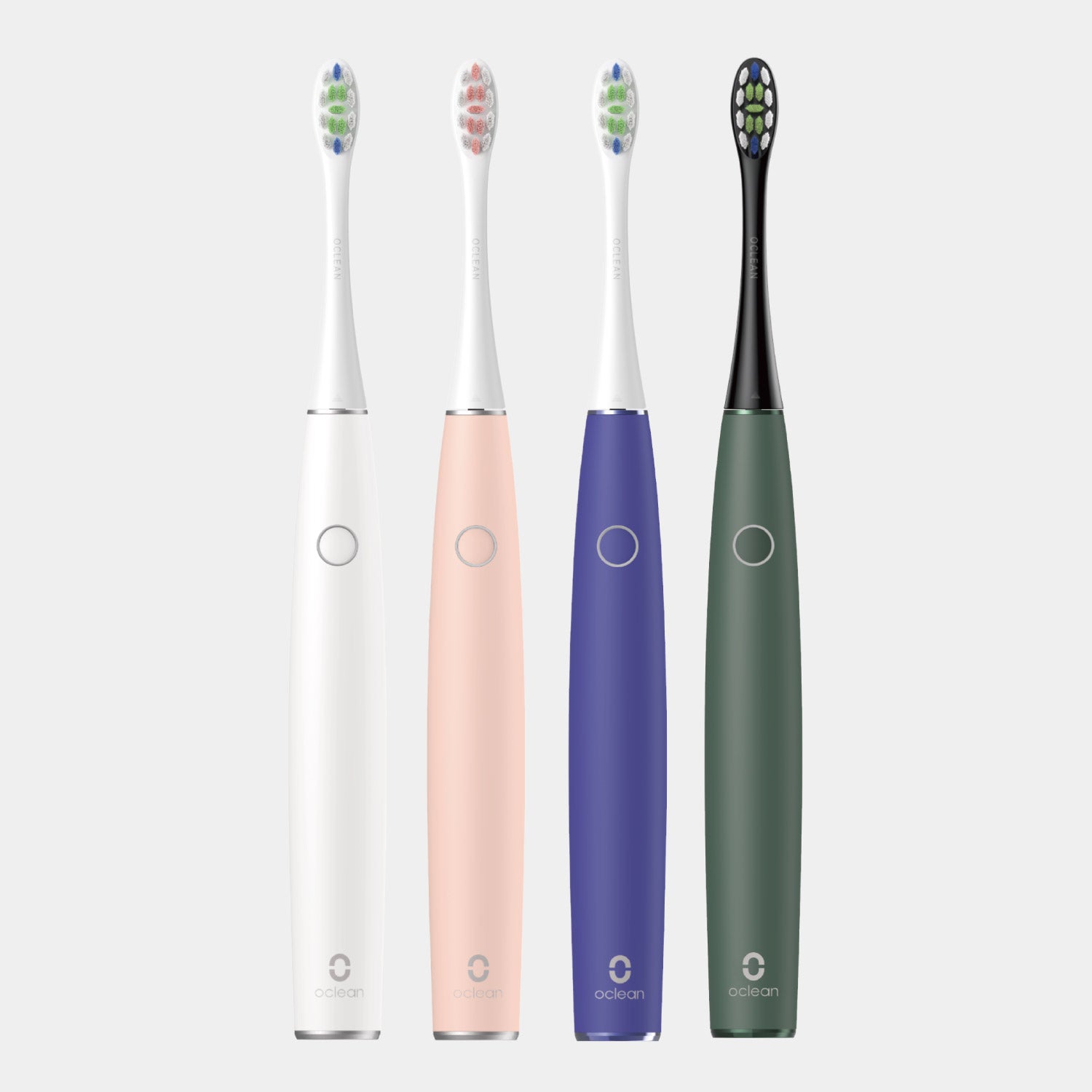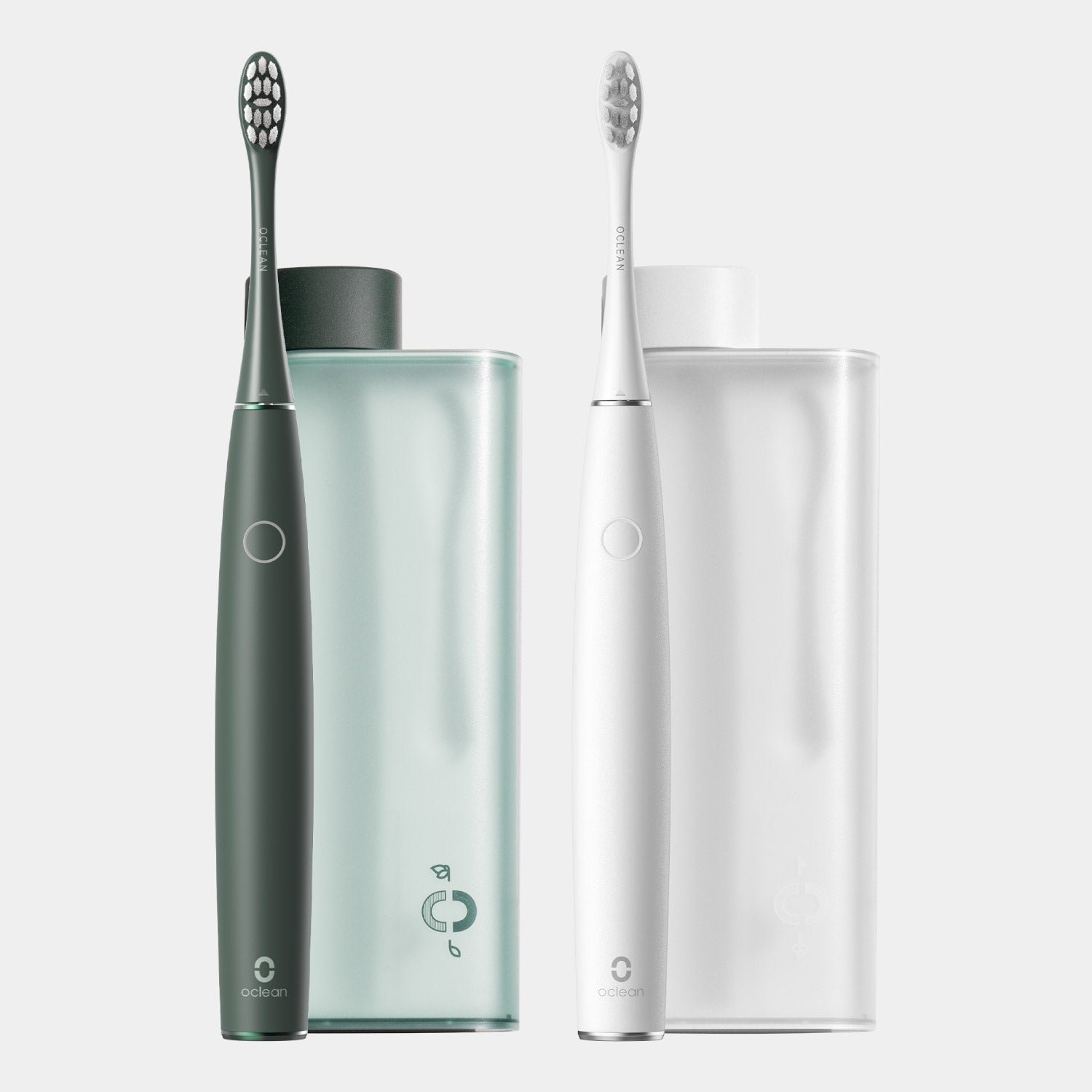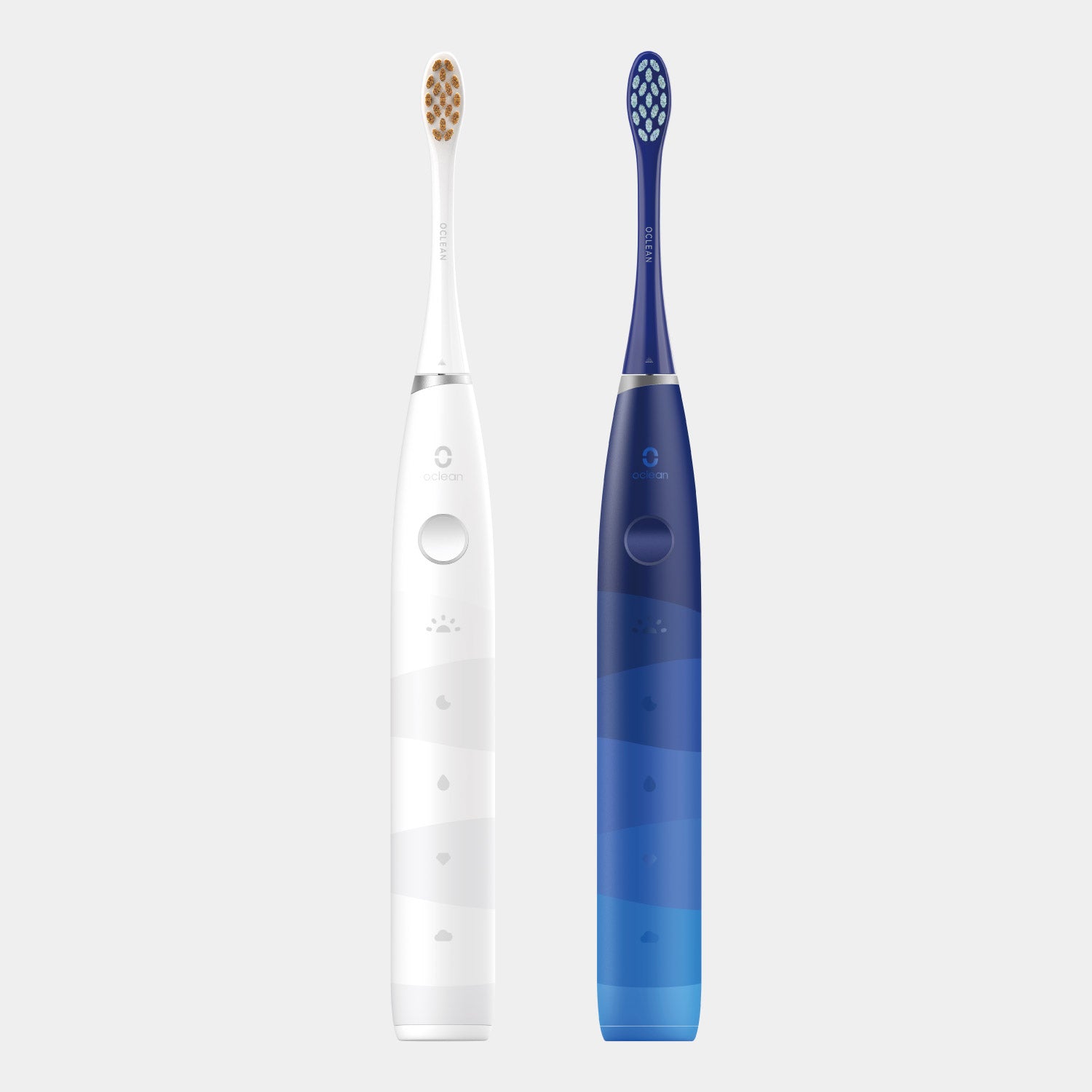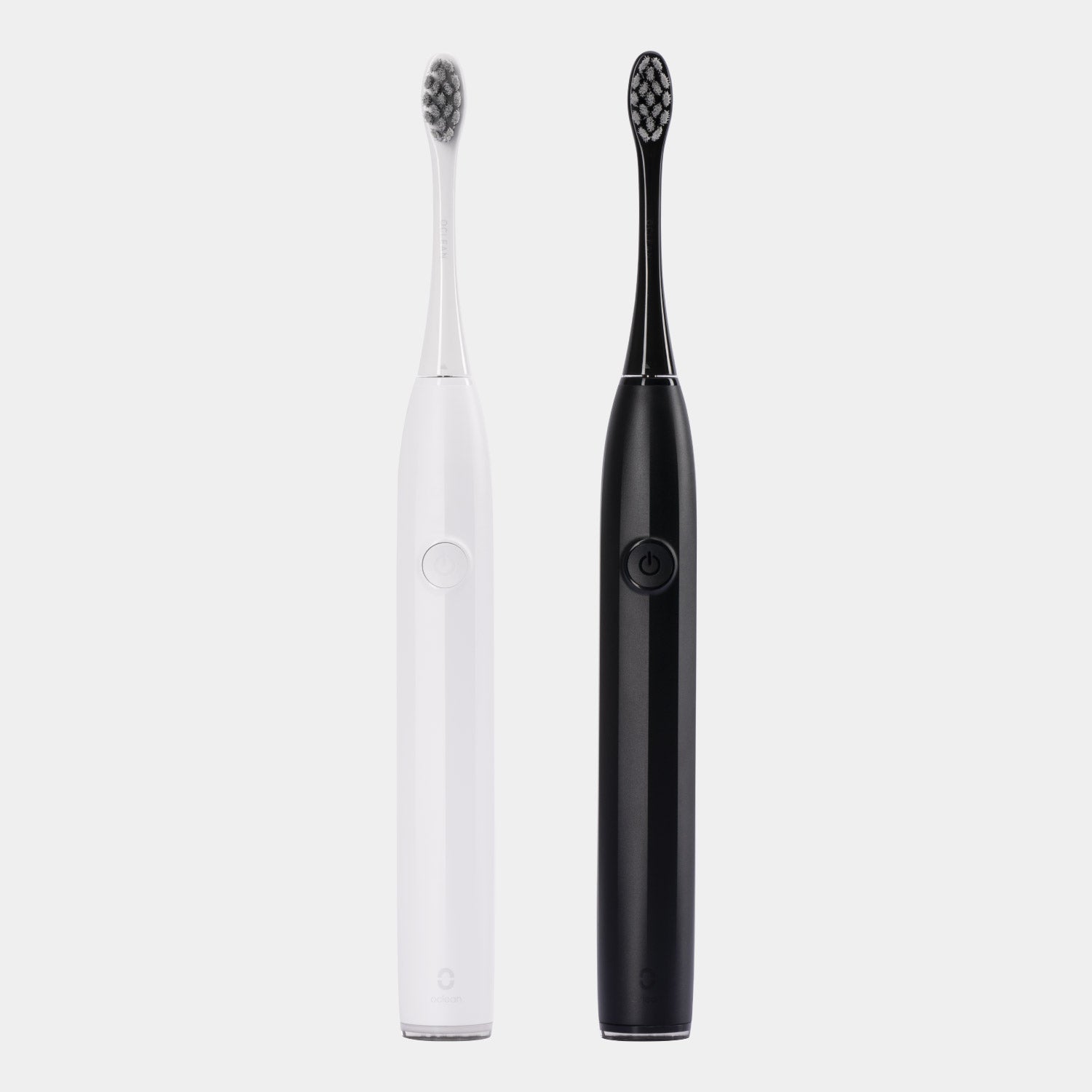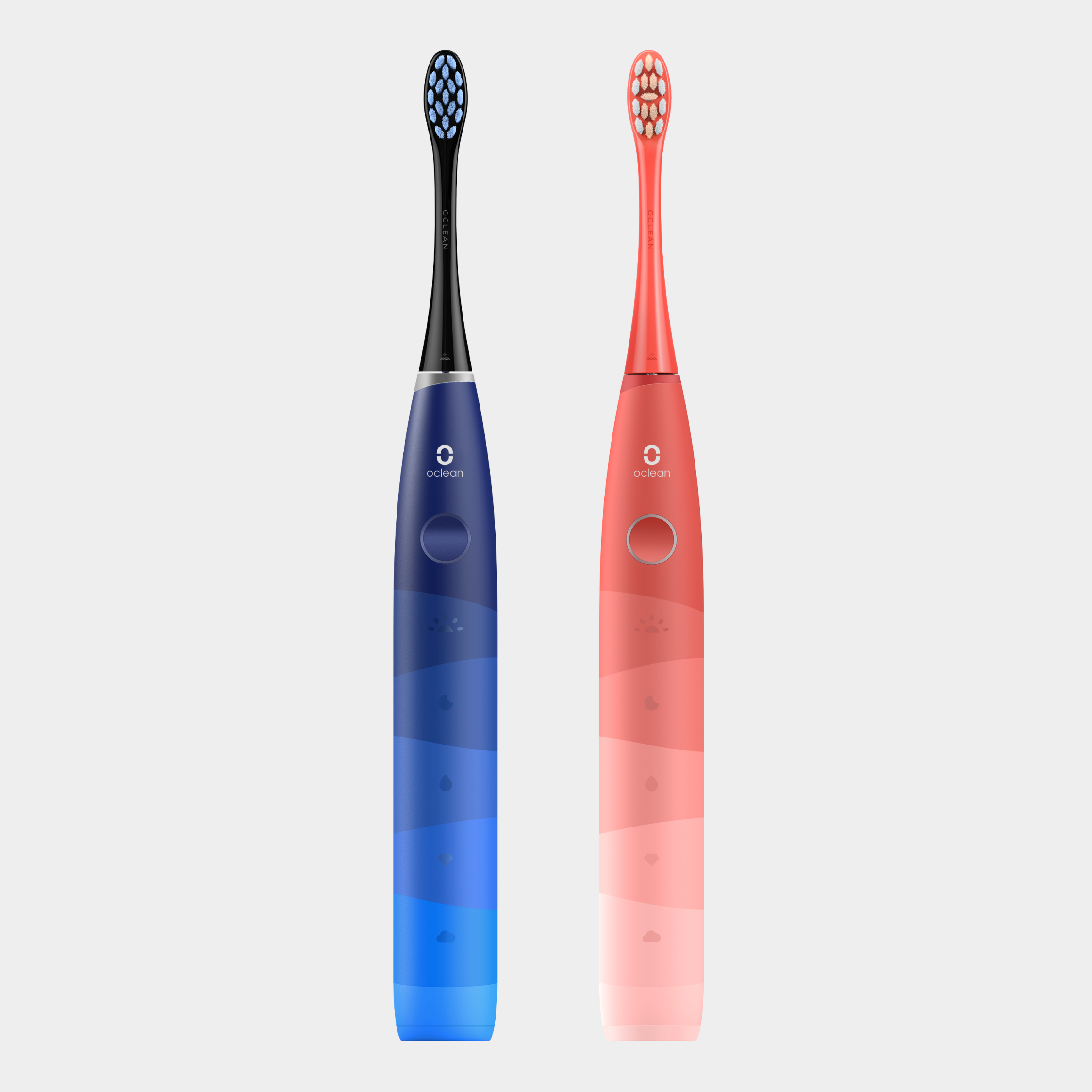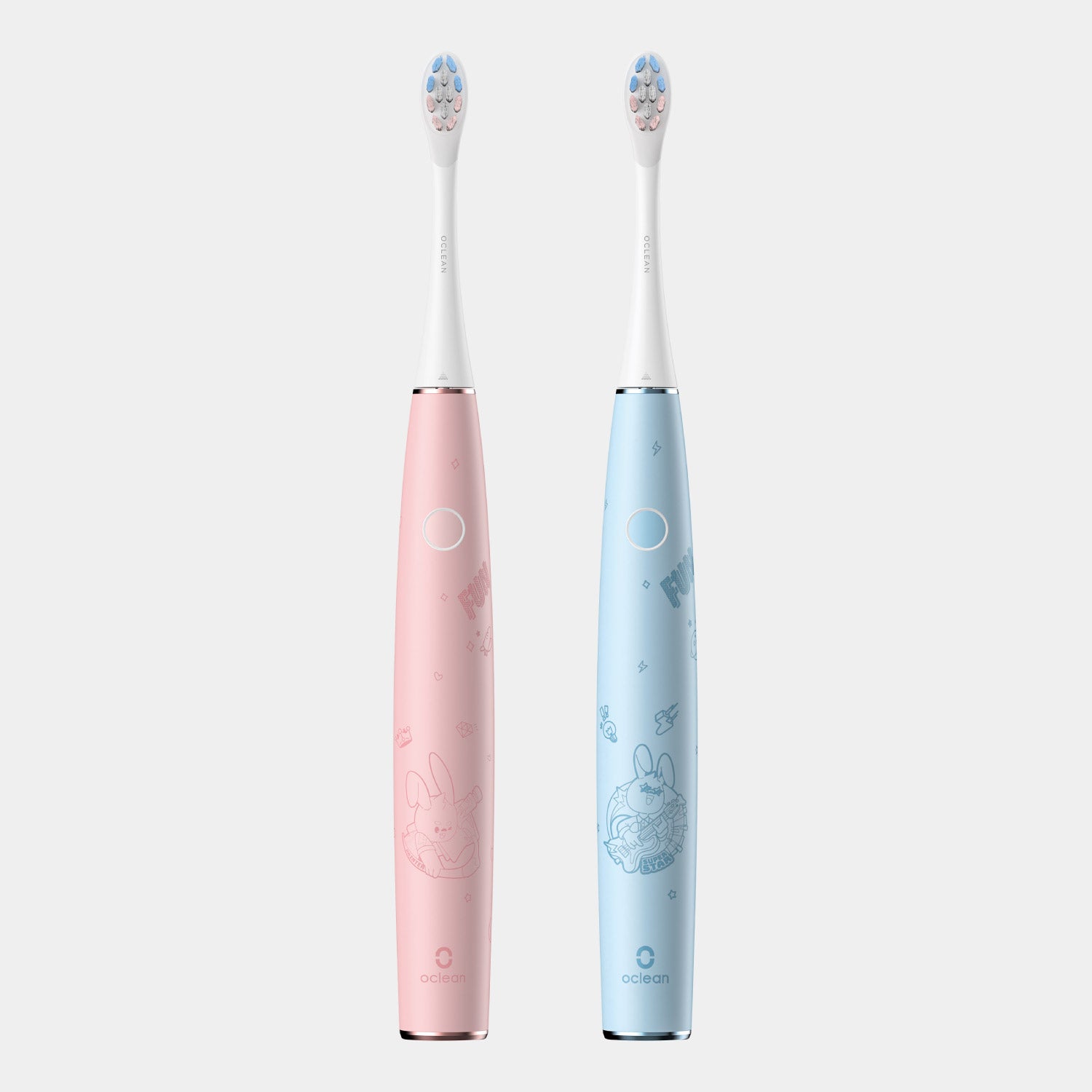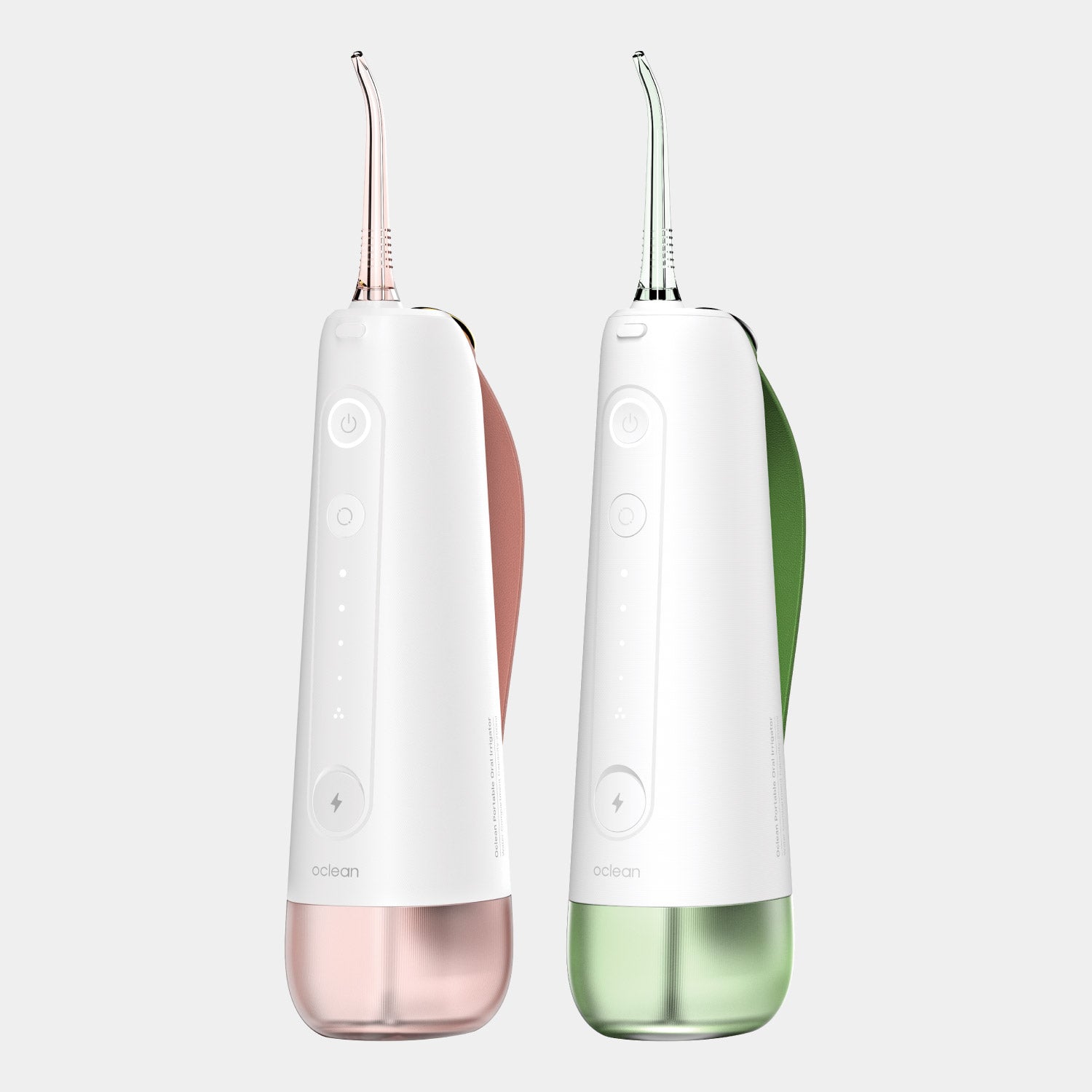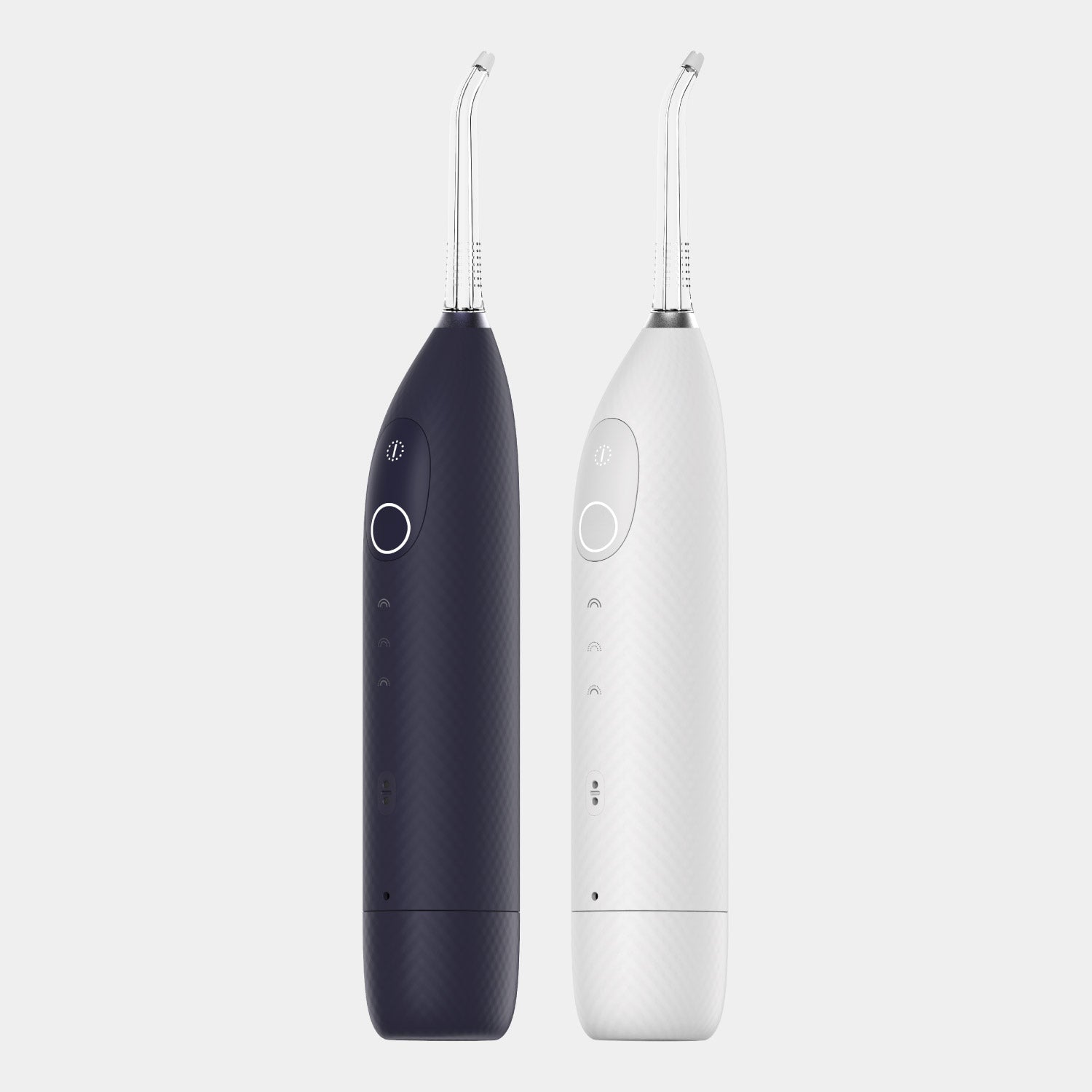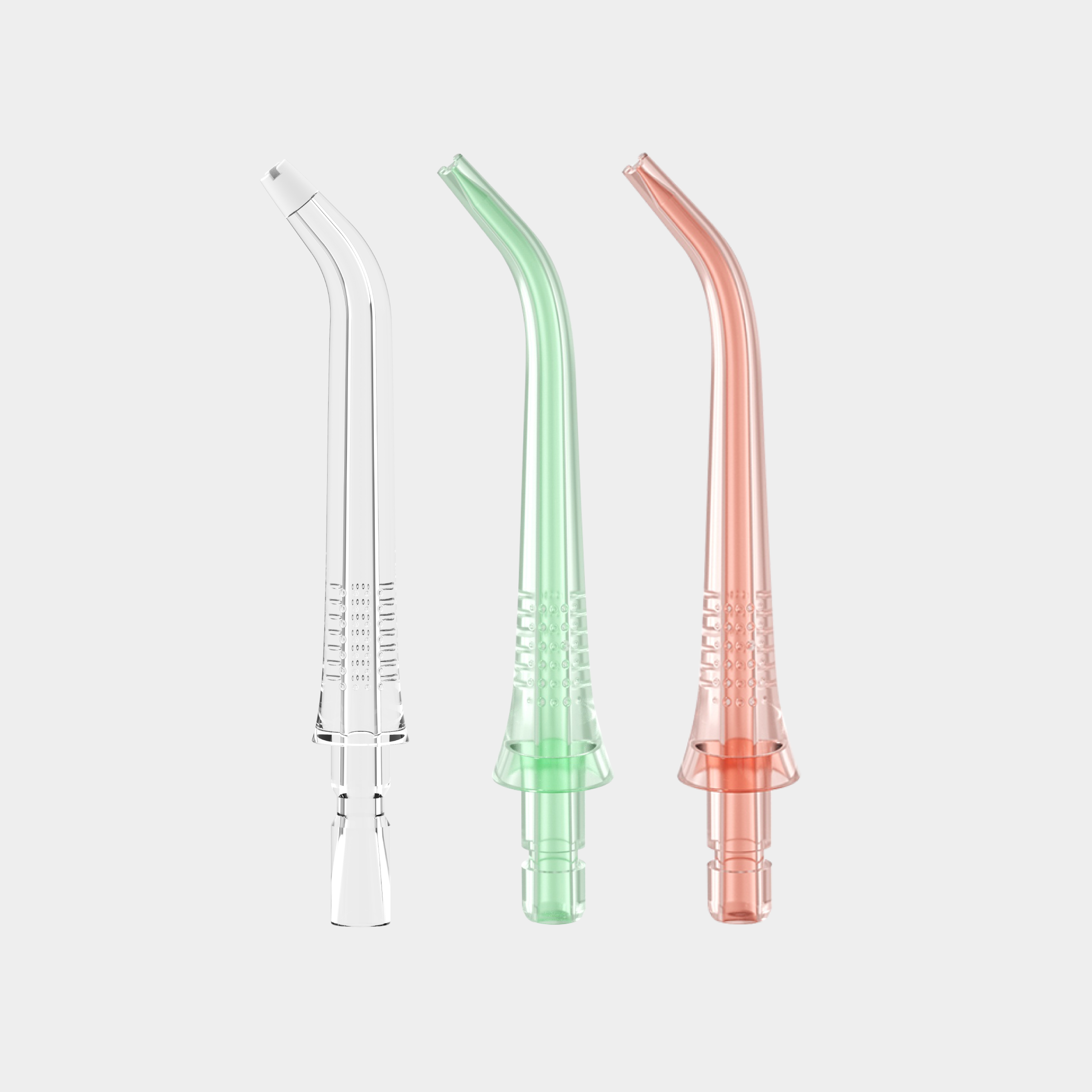Tooth infections are a common issue, particularly in severely damaged teeth, often caused by cavities. Luckily, root canal procedures and natural antibiotics can effectively treat these infections.
Not all damaged teeth develop infections, but the risk increases when a tooth sustains severe damage, leading to the death of its dental pulp without proper treatment.
In such cases, natural antibiotics can play a crucial role in controlling and reducing the infection. Certain natural substances possess potent antibacterial properties that can improve the condition and combat harmful microorganisms.
In this article, we will explore the most powerful natural antibiotics for tooth infections and understand why they are so effective.

Do We Always Need Antibiotics?
Antibiotics are potent medications designed to combat infections, often serving as the primary treatment option. When used correctly, they are reliable and yield predictable results.
However, antibiotics aren't always necessary for tooth infections. This is because tooth infections often stem from a dead dental pulp. As long as the pulp remains untreated via a root canal procedure, bacteria continue to spread and infect the surrounding tissues.
In such cases, taking antibiotics may improve the patient's condition but won't fully resolve the infection. Consequently, modern dentistry tends to prescribe antibiotics only when a fever and facial swelling are caused by the infection.
Nevertheless, certain natural substances, foods, and products possess antibacterial properties and can help manage the infection while awaiting a root canal treatment.
Understanding Antibiotic Medication
The Main Objectives of Antibiotics
Since their appearance after WWI, antibiotics have been on the counter of each medical facility to help healthcare providers destroy or inhibit bacterial growth. These powerful drugs target the harmful bacteria that causes infections and diseases all over the world.
Antibiotic medication works by preventing bacterial reproduction and stopping dangerous microorganisms that used to be lethal for humankind from growing and replicating inside our bodies. As a result, most antibiotics don’t kill every microorganism in your body but reduce their numbers enough to allow your immune system to fight back infections more effectively.
Also, antibiotics protect you from complex and severe complications that may result from certain diseases and conditions that could put your life at risk. When you use antibiotic treatment correctly, you prevent existing infections from spreading to other areas, organs, tissues, or systems, reducing the risk of severe consequences such as bacteremia or sepsis.

Methods of Action – How Antibiotics Kill Bacteria
Nowadays, there are multiple antibiotics, natural or synthetic, with diverse methods of action and mechanisms to destroy bacteria, stop their reproduction, or prevent their development. Here you have a list of the most frequent ones:
● Cell wall disruption: These antibiotics, like penicillins and their derivatives, break down the proteins holding the bacterial cell walls together, leading to their death by implosion.
● Protein synthesis inhibition: Other modern antibiotics like tetracyclines prevent bacteria from producing essential proteins, disrupting their metabolism and stopping their growth. These are also called bacteriostatic medications.
● DNA/RNA interference: Some contemporary antibiotics can block bacterial DNA replication, preventing them from multiplying and reproducing from the start. By preventing them from increasing in number, they allow the immune system to catch and kill the remaining bacteria in the infection site.
● Membrane disruption: Certain antibiotics damage bacterial cell membranes, leading to their rupture and cell death.
Independently of their action method, antibiotics are effective and relatively quick methods to fight common and rare infections, saving millions of lives globally and preventing multiple complications in ordinary procedures.
Common Sources of Antibiotics
The source of the antibiotic plays a fundamental role in its power and antibacterial ability. There are three main sources of antibiotics:
● Natural sources: While they are getting rare as new antibiotic principles come forward in modern medicine, many antibiotics are derived from bacteria or fungi, such as penicillin. The Penicillium mold was first discovered and used by Alexander Flemming in 1928 when he found out it could kill bacteria and other germs that were lethal for humans. After his discovery, a new branch of pharmacy sprouted from his findings, saving countless lives.
● Semisynthetic antibiotics: They are modified natural antibiotics with improved effectiveness, whether it is to target a reduced group of bacteria or to act quicker and more aggressively. This group of antibiotics includes the most widely used antibiotic in dentistry—amoxicillin.
● Synthetic antibiotics: They are antibiotics designed and created synthetically in a lab facility, improving the chemical structures and effectiveness of natural or semisynthetic antibiotics to combat and destroy resistant bacteria (e.g., fluoroquinolones).

Common Side Effects of Commercial Antibiotics
Despite their importance and crucial impact on everyday medicine and dentistry, antibiotics can have multiple side effects, including:
Gastrointestinal Issues
They are one of the most common side effects of antibiotic treatment, ranging from mild to severe reactions. They can go from nausea, diarrhea, cramps, bloating, and stomach pain to severe digestive conditions. While they may not appear all the time, they are a sign to look for, as they could be an indication of the disruption of healthy gut bacteria.
Oral and Fungal Infections
Our body lives in full harmony with a healthy bacterial microflora—an ecosystem of indispensable and necessary bacteria that allow our organism to perform basic and complex metabolic functions. However, the excessive or prolonged use of antibiotics, while having their own purpose and utility, can kill beneficial oral bacteria, leading to oral thrush, bad breath, and increased plaque buildup. Unfortunately, this issue can also translate to the gut and the vagina.
Allergic Reactions
Although they are uncommon, some individuals can be allergic to penicillin or their derivatives. The symptoms of these allergies can range from mild rashes to severe anaphylaxis, requiring immediate medical attention. You should always be transparent with your medical history and report any indication of allergies to antibiotic treatment to prevent complications.
Antibiotic Resistance
Sadly, while antibiotics are essential for every healthcare professional, their overuse or misuse can lead to bacteria developing resistance. This is an enormous issue among healthcare providers and a considerable headache that could make future infections harder to treat.
Drug Interactions
Certain antibiotics can cause interference with other medications, creating incompatibility issues with drugs like birth control pills, blood thinners, and antacids. This relationship is called pharmaceutical interaction, and it's a significant factor to consider in every antibiotic therapy.
Weakened Immune Response
Over time and with the inappropriate use or overuse, antibiotics may weaken your natural immune defenses by reducing microbial diversity in the body. The reduced microbial flora makes your immune system lazy, making it more prone to other infections in the long term.
Most Effective Natural Antibiotics for Tooth Infections
The following natural antibiotics stand out as excellent home remedies for tooth infections:
1. Clove
Clove boasts both anti-inflammatory and antibacterial properties, extensively studied and proven. It's also an active component in dental eugenol, commonly used during root canal treatments.
Clove oil can be applied at home to alleviate infection and its associated symptoms. To use it, gently apply clove oil to the infected area using a clean swab or piece of cloth. Some individuals have also found relief by chewing cloves, releasing their oils over the affected area.

2. Garlic
Garlic, rich in allicin, acts as both an anti-inflammatory and antibacterial agent. Allicin is a natural oil found in garlic and responsible for its distinct odor and flavor. However, it also delivers a potent antibacterial effect that helps combat tooth infections.
You can crush garlic and apply it directly to the infected area. Additionally, garlic concentrates are available in stores, serving as helpful supplements for infection treatment. It's crucial not to exceed the recommended dosage, as excessive consumption can lead to internal bleeding.
3. Turmeric
Turmeric, a common spice found in many kitchens, is renowned for its antibiotic properties and even provides analgesic relief.
To harness its therapeutic effects, mix a tablespoon of turmeric with two tablespoons of water, creating an antibiotic paste. Apply this paste to the infected area and leave it for a few minutes before rinsing thoroughly with water. Repeat this process several times a day.
4. Warm Saltwater Rinses
Warm saltwater rinses are a traditional home remedy recommended by most dentists. Saltwater possesses powerful anti-inflammatory properties, promoting the destruction of harmful bacteria and enhancing the healing process.
To make a saltwater rinse, mix half a tablespoon of salt in a glass of warm water and rinse for about a minute. These rinses also help clean the mouth, removing substances that harmful bacteria can use for reproduction. For improved cleaning, consider using a water flosser before rinsing.
5. Ginger
Ginger, another popular spice, boasts antibiotic properties attributed to glycerol.
You can use ginger in various ways to combat tooth infections. Crush it and apply the paste to the infected area with a swab. Alternatively, chew a piece of ginger to release glycerol directly into the mouth near the infected tooth. Ginger can also be consumed as an infusion to harness its therapeutic effects.
6. Honey
Honey is a potent natural antibacterial sweetener. It has been widely used for centuries as a healing agent, and it’s now known for its antioxidant and anti-inflammatory properties due to its phenolic compounds. When it is properly stored and cleaned, medical-grade honey can act as an antimicrobial solution, killing bacteria and promoting healing at the same time.
You can use honey by integrating it into your diet or applying raw honey directly to the infected area. However, its most noticeable effects are on the skin, as well as its antioxidant and anti-inflammatory effects.
7. Coconut Oil
Oil pulling is a holistic technique that involves taking a coconut or sesame oil spoon to wash your mouth for 10 to 20 minutes. This method allows you to drag bacteria while catching food particles, germs, and other harmful elements in your oral cavity. As a result, it strengthens your gums, allowing you to eliminate unwanted elements from your body by spitting out the oil after the rinse.
You can harvest the antimicrobial effect of coconut oil by using it as an oral rinse, swishing 1 tbsp of coconut oil around your mouth for 15 minutes daily.
8. Oregano Oil
Oregano oil is a potent natural antiseptic that contains carvacrol, which acts as an antimicrobial agent in your mouth. It can help reduce bacterial count while releasing antioxidants. You can dilute oregano oil with carrier oil and apply it to the gums a few times a week to obtain great results.
9. Aloe Vera
Aloe vera is a proven soothing and antibacterial natural element. It kills oral bacteria and reduces gum inflammation by inducing healing and cell repair. You can make the most out of its properties by applying aloe vera gels directly to the gums or soft tissues during infections, ulcers, or to improve healing.

Understanding Tooth Infections: Causes, Symptoms, and Risks
What Is a Tooth Infection?
A tooth infection is a localized accumulation of harmful bacteria in your teeth or gums. It can appear due to multiple causes as a confined abscess or by affecting neighboring tissues and areas. Moreover, it can go from mild infections to severe cases where immediate professional attention is necessary.
Tooth infections typically occur when decay and gum disease invade inner layers and tissues, causing painful swelling, pus accumulation, and other symptoms.
Common Causes of Tooth Infections
While tooth infections can have multiple causes and triggering factors, the most frequent culprit is poor oral hygiene. Although most oral diseases are preventable with the appropriate oral care and maintenance, most patients suffer recurrent infections due to inadequate habits, unhealthy lifestyles, and the wrong hygiene routine.
When you allow harmful bacteria to accumulate on your teeth and gums, they start to feed from food leftovers and sugars to irritate your gums and demineralize the enamel in your teeth, leading to the most common oral diseases—dental caries and periodontal disease.
Additionally, tooth infections can also result from untreated cavities, advanced gum disease, dental trauma, and due to other systemic diseases like diabetes or autoimmune conditions. Finally, certain medications and therapies can also induce tooth infections.
Symptoms and Warning Signs of a Tooth Infection
The exact signs of a tooth infection depend on its cause and severity. However, the most common symptoms include:
● Tooth pain
● Swollen gums or cheeks
● Redness and tenderness
● Difficulty chewing
● Pus
● Bad breath
● Mobile teeth
● Swollen glands
● Fever.
Besides, you should always be aware of red-flag symptoms like facial swelling and difficulty breathing, as they are clear indications that you require urgent medical attention.

Risks of Untreated Tooth Infections
Severe tooth infections are one of the most frequent life-threatening complications in dentistry. While tooth infections typically are confined to your teeth and gum tissues, they can also travel to the surrounding bone and other structures, making the recovery complex and challenging.
Besides, although it is a rare complication, an untreated severe tooth infection can evolve into cellulitis, which can rapidly pass into the bloodstream. Once it gets into the blood, it can spread harmful bacteria into other organs, regions, and systems that aren’t prepared to face those microbes. This complication is known as bacteremia, which can also cause a generalized infection called sepsis.
Can Natural Antibiotics Effectively Treat Tooth Infections?
Tooth infections can be incredibly painful and may lead to severe complications if they’re left untreated. While antibiotics are proven pharmacological medications to face bacteria and infections, many people look for natural alternatives to these conventional methods, hoping to fight bacteria without pharmaceutical drugs. However, how effective are natural antibiotics for treating a tooth infection?
What Are Natural Antibiotics?
Natural antibiotics are all those substances derived from plants, herbs, and other organic sources that possess antimicrobial properties. Unlike pharmaceutical antibiotics, which are mostly lab-formulated to target specific bacterial strains, natural antibiotics rely on compounds that naturally inhibit bacterial growth, reduce inflammation, and support healing.
Among the most well-known natural antibiotics we already covered are garlic, clove oil, turmeric, coconut oil, honey, and oregano oil, among others.
While it is easy to be enthusiastic about their antimicrobial properties, these remedies work differently than pharmaceutical antibiotics. In consequence, they are far less potent, less effective, and take much more time to achieve similar results. Additionally, their effectiveness depends on the severity of the infection and many other conditions like the immune system response and current health state.
Scientific Evidence Behind Natural Antibiotics for Dental Health
Numerous studies have confirmed that natural substances can effectively combat oral bacteria, particularly those responsible for cavities, gum disease, and mild infections.
Research has shown that allicin in garlic is effective against Streptococcus mutans and Porphyromonas gingivalis, two bacteria closely related to tooth decay and gum disease.
A study published in the Journal of Dentistry found that eugenol, the active compound in clove oil, has significant antimicrobial benefits and pain relief, making it a highly useful natural remedy for toothaches and mild infections. However, although eugenol has been widely used in dentistry for years, it’s currently in disuse in several countries.
Furthermore, medical-grade honey has been studied for its ability to inhibit bacterial growth and promote wound healing, including lesions in the oral cavity and other soft tissues.
However, while these studies suggest that natural antibiotics have promising antibacterial effects, they do not always work as fast or as effectively as pharmaceutical antibiotics, especially for deep infections and resistant bacteria.

How to Use Natural Antibiotics Safely and Effectively
Proper Dosage and Application Methods
While natural alternatives are great helpers in keeping a healthy mouth, you must use the appropriate amount to avoid misuse and weak effects. The best way to apply essential oils and natural remedies is by applying them, with the correct dosage, directly to the affected area. However, keep in mind that these remedies are aiding resources and not a direct replacement for mediation.
Common Mistakes When Using Natural Remedies
Avoid using undiluted essential oils, as they can cause more harm than good. Highly concentrated natural oils can cause the following effects:
● Chemical burns by using highly concentrated plant extracts.
● Redness and irritation that lead to tissue damage.
● Accidental ingestion and toxicity by swallowing some essential oils, such as tea tree and eucalyptus oil.
● Nausea, dizziness, and allergic reactions after accidental ingestion.
● Disruption of the natural equilibrium of oral bacteria due to excessive overuse, potentially worsening infections.
● Leaving extremely strong taste, which can cause burning sensations in the mouth, leaving discomfort that can last for hours, making it difficult to eat, drink, or speak normally.
Best Ways to Apply Natural Remedies for Maximum Effect
Following, you have some practical recommendations to avoid problems and make the most out of your natural antimicrobial agents:
● Dilute with a Carrier Oil: Mix your essential oils with coconut oil, olive oil, or almond oil before applying them to the gums. Use a safe ratio, like 1–2 drops of essential oil per teaspoon of carrier oil.
● Use in Mouth Rinses: Add 1–2 drops of essential oil to a glass of warm potable water and swish for 30 seconds to 1 minute. Never swallow the solutions and spit it whole.
● Choose High-Quality Oils: Buy your natural remedies from a trustworthy provider to avoid mixed or diluted solutions. Also, use only 100% pure, therapeutic-grade essential oils to avoid additives and contaminants.
● Use Two Times Per Week Max: Just as with conventional antibiotics, overusing natural remedies can cause more harm than good. Avoid overuse and make the best of their properties without damaging your tissues or disrupting your oral microbiota.

When to Combine Natural and Conventional Treatments
To achieve the best results, consider taking a balanced approach, combining both natural and conventional therapies:
● Use natural antibiotics for mild symptoms, as a preventive measure, or as an adjunct to medically prescribed treatment.
● Maintain excellent oral hygiene with a high-quality sonic electric toothbrush like the Oclean X Elite to prevent bacteria buildup.
● If symptoms worsen, seek professional dental care immediately to avoid severe complications.
Preventing Tooth Infections Naturally
The Importance of Good Oral Hygiene
Oral hygiene is the most crucial practice and best method to have great oral health. Here you have some practical tips to improve your current oral hygiene routine:
● Brush your teeth daily using a manual soft-bristle toothbrush or a sonic electric toothbrush.
● Use the appropriate brushing technique by tilting your toothbrush 45° towards your gums and making short circular and horizontal movements.
● Floss your teeth with dental floss or by using a water flosser or interproximal toothbrush.
● Visit your dentist at least once every year to check your overall health state and catch any dental issues that may come up.
● Use an antiseptic mouthwash to rinse your mouth and reduce bacteria reproduction.
● Use a tongue scraper to remove any food debris that could get trapped in your tongue after brushing.
The Role of Diet in Oral Health
Diet has an essential role in oral and general health. Depending on the type of food you eat, you’ll have less or more chances to suffer from oral diseases like gum disease and cavities. For instance, foods that contain probiotics, vitamin C, calcium, minerals, and antioxidants are great for fighting bacteria development while giving you all the nutrients you need. On the other side, foods that contain processed carbs like industrialized flour and sugars provide the perfect meal for harmful bacteria that induce gum irritation and demineralization. Also, acidic drinks and foods can irritate oral tissues, inducing erosive lesions and weakening the outer layers of your teeth.
When to Seek Professional Help for a Tooth Infection
Oral infections shouldn’t be overlooked in any circumstance. While some of them are manageable with home or ambulatory measures, it is hard to determine the true severity of an infection without the appropriate exams and professional evaluation. Therefore, it is always advisable to consult your dentist and attend a consultation when the first symptoms appear. Yet, understanding and knowing the previously covered signs and symptoms could help you identify frequent worrying signals.
Signs That Require Urgent Dental Care
Be aware of severe swelling, systemic symptoms like fever, difficulty breathing, and persistent pain that doesn’t improve with conventional painkillers.

How Dentists Treat Tooth Infections
The only way to properly assess a tooth infection is by receiving professional treatment. Almost every tooth infection requires some sort of dental treatment and pharmaceutical antimicrobial therapy to resolve the case positively. Most provisional and temporary measures are meant to alleviate the symptoms and prevent the problem from worsening but don’t solve the initial cause of the problem.
Among the many procedures dentists can perform to fix a tooth infection, we can find:
Antibiotic therapy
Many situations will require prescription antibiotic therapy with amoxicillin or other similar antimicrobial medication to effectively eliminate the bacteria accumulation in the infection zone before, during, or after the definitive dental treatment. This approach is highly common for multiple surgical and complex procedures that need bacteria at their lowest to prevent dangerous complications.
Root Canal
Just dealing with bacteria is not enough to solve most tooth infection problems. When harmful bacteria affect the tooth’s pulp irreversibly, you’ll most likely need an endodontic treatment, commonly known as a root canal. It consists of a deep disinfection and cleaning process on the inside of the tooth, to later seal it with a thermoplastic material. During the process, the dentist removes the dead tissue and disinfects the canals to allow an easy filling that protects the tooth and gives it valuable functional years.
Periodontal Curettage and Root Scaling and Planing
When the source of the infection is located in your gums, dentists can use specialized equipment and tools to clean, disinfect, and remove the dangerous plaque and tartar attached to the tooth, responsible for the irritation and inflammation. While periodontal treatment can go unaverted due to its slow progression and appearance of symptoms, it is a significant dentistry challenge that can lead to tooth and bone loss, making other treatments much more complicated and expensive.
Abscess Drainage
When pus accumulation is too great for antibiotics to work on their own, dental professionals can also drain the infection site to relieve the pressure and infectious content, providing instant relief and improvement. Sometimes, this process can take multiple sessions until the zone is completely healed.
Tooth Extraction
A tooth extraction is the last line of defense and the most radical procedure to fix a tooth infection. It consists of complete tooth removal under local or general anesthesia that typically comes with posterior physiological bone loss. Most times, dental care providers will try to perform other therapies and treatments before considering the extraction. However, when the tooth has a low survival chance or the success of other treatments isn’t feasible, this is the best option to avoid severe complications.
Why You Shouldn’t Self-Medicate for a Tooth Infection
The Risks of Taking Antibiotics Without a Prescription
Despite their great advantage and effects, antibiotics should only be used under professional indication and following the appropriate dosage and instructions. Taking the wrong antibiotic may not treat the infection it was prescribed for, leaving the target bacteria untouched while affecting other healthy microbes that are fundamental for your body. As a result, taking the wrong antibiotic can worsen symptoms and delay your treatment.
Also, not taking the appropriate doses or stopping the treatment before completion can translate into stronger survival bacteria that can develop resistance to the medication. For instance, if you take antibiotics every time you catch a cold, the bacteria in your body can get used to the medication, learning how to resist it. In consequence, the next time you truly need the antibiotic effects, the target bacteria will already know how the medication works, making it useless.
Additionally, medication therapy can mask symptoms instead of solving the root issue by temporarily relieving symptoms but without addressing the underlying cause, like an abscess or decay.

The Growing Threat of Antibiotic Resistance
Antibiotic resistance refers to the adaptation abilities of some bacterial species to neutralize the medication method of action. While there are naturally resistant bacteria associated with multiple diseases, antibiotic resistance typically results from overuse and misuse of antibiotics treatment, leading to bacteria evolving and becoming stronger and more dangerous.
Although it might sound simple to solve, antibiotic resistance is an enormous healthcare concern that shouldn’t be neglected. Nowadays, hundreds of thousands of patients around the world struggle to solve their infection problems due to antibiotic resistance. Unfortunately, this issue is the consequence of years of inadequate medication habits mixed with bacteria evolution and insufficient education.
Why It Is a Global Health Concern
When you face an antibiotic-resistant infection, you need stronger and more toxic drugs to treat issues that could be straightforward in other circumstances. Scientists are constantly researching and looking for new antibiotics that can fight resistant bacteria, but despite their efforts, there are only a group of effective antibiotics in the world.
The impact on dental health
Some oral bacteria can become resistant to standard dental antibiotics, making oral infections more dangerous and, at the same time, more expensive. Keep in mind that every antibiotic targets a specific type of bacteria. After all, professionals try to attack the harmful microbes and leave the healthy ones intact.
How to Use Antibiotics Responsibly
● Follow your dentist’s instructions and take antibiotics under a professional healthcare prescription only.
● Complete the full course of your antibiotic treatment. Avoid skipping, missing, or shortening the treatment to save some pills. Even if symptoms improve, don’t stop taking the medication too soon, as it can allow bacteria to survive and develop resistance.
● Always explore natural alternatives with caution. While many natural remedies can help with mild infections, severe cases require medical professional intervention. Also, keep in mind their appropriate dosage and frequency to prevent burns and other issues.
The Role of Probiotics in Oral and Gut Health
Why Antibiotics Affect Your Microflora
Every time we use antibiotics, we kill both harmful and beneficial bacteria. Although most antibiotic drugs target a particular type of bacteria, they also disrupt the balance of good bacteria in your mouth and gut. This effect can have significant consequences on your gut and oral healthy microbiota. Yet, despite these side effects, stopping an infection is the priority when other complications are at risk.
Besides, overusing antibiotics can cause oral microbiome disruption, making you lose beneficial bacteria. This microbiome dysfunction can lead to other issues like bad breath, increased plaque buildup, and a higher risk of cavities.

How Probiotics Support Oral and Gut Health
Fortunately, you can restore the balance after antibiotics with the help of probiotics. Probiotic therapy is the opposite of antibiotics. It consists of repopulating beneficial bacteria in your gut and mouth to prevent the overgrowth of harmful microbes. In simple terms, you create a tough competition where you want good bacteria to win. As a result, healthy microbes keep all the food and resources while the dangerous bacteria start to decrease and die.
Nowadays, the most common probiotic oral medication includes certain probiotic strains such as Lactobacillus reuteri and Streptococcus salivarius to reduce inflammation, prevent cavities, and fight gum disease.
Besides its oral benefits, having a healthy microbiome also boosts your immune function. With a strong gut microbiome, you strengthen the immune system while reducing the risk of recurring infections.
Best Sources of Probiotics for Oral and Gut Health
You can also improve your healthy microbiome by consuming fermented foods and drinks like yogurt, kefir, sauerkraut, kimchi, miso, and kombucha. All these are natural sources of probiotics that can help you maintain your microbiome or recover it after a long antibiotic therapy. You can also consider using multi-strain probiotic supplement capsules designed for gut and oral health.
An Effective Approach to Preventing Tooth Infections
Relying solely on natural antibiotics is insufficient for preventing tooth infections. Proper dental hygiene is crucial. Alongside correct brushing techniques, choosing an excellent electric toothbrush can significantly enhance cleaning efficiency and prevent infections effectively.
The Oclean X Pro Elite Smart Sonic Toothbrush, equipped with Maglev Technology offering 20x Standard Cleaning Power, improves cleaning efficiency while ensuring a comfortable brushing experience.

FAQs About Natural Remedies for Tooth Infections
Can I use natural antibiotics instead of prescription antibiotics?
Taking natural remedies can help fight some mild infections. However, they do not replace prescribed antibiotics or other dental treatments required for a complete rehabilitation.
How long does it take for a natural remedy to work?
While some remedies work within hours, most of them may take days or weeks to achieve complete healing due to their low concentrations and slow action methods.
Can I prevent tooth infections by using a sonic toothbrush?
Yes! Oral hygiene is a fundamental pillar to preventing tooth infections, and sonic electric toothbrushes allow you to remove plaque and bacteria more effectively.
Can a tooth infection go away on its own?
No, a tooth infection will never heal on its own. Moreover, it can spread to the jaw, bloodstream, or other parts of the body without treatment, leading to serious health complications. Natural remedies may help manage symptoms temporarily, but professional dental care is necessary for most types of infections.

Conclusion
Antibiotics are vital in infection cases, although they may not always be necessary for tooth infections. They can help improve a patient's condition, but only a root canal treatment can completely eradicate a dental infection.
However, certain foods and substances act as natural antibiotics. Clove, garlic, and ginger are popular choices, each with its unique mechanisms for achieving therapeutic effects. All of them are equally effective in treating tooth infections. Additionally, their anti-inflammatory properties provide added benefits for improving overall well-being
References
1. Bessa, L. J., Botelho, J., Machado, V., Alves, R., & Mendes, J. J. (2022). Managing Oral Health in the Context of Antimicrobial Resistance. International journal of environmental research and public health, 19(24), 16448. https://doi.org/10.3390/ijerph192416448
2. Hutchings, M. I., Truman, A. W., & Wilkinson, B. (2019). Antibiotics: past, present and future. Current opinion in microbiology, 51, 72–80. https://doi.org/10.1016/j.mib.2019.10.008
3. Baran, A., Kwiatkowska, A., & Potocki, L. (2023). Antibiotics and Bacterial Resistance-A Short Story of an Endless Arms Race. International journal of molecular sciences, 24(6), 5777. https://doi.org/10.3390/ijms24065777
4. Santacroce, L., & Jirillo, E. (2022). The Era of Natural Antibiotics Toward 2050: First Part. Current pharmaceutical design, 28(35), 2855. https://doi.org/10.2174/138161282835221013110056
5. Prusov E. V. (2016). Natural Product-Based Antibiotics: Synthesis and SAR-Studies. Current pharmaceutical design, 22(12), 1730–1755. https://doi.org/10.2174/1381612822666160115130633
6. Spagnolo, F., Trujillo, M., & Dennehy, J. J. (2021). Why Do Antibiotics Exist?. mBio, 12(6), e0196621. https://doi.org/10.1128/mBio.01966-21



